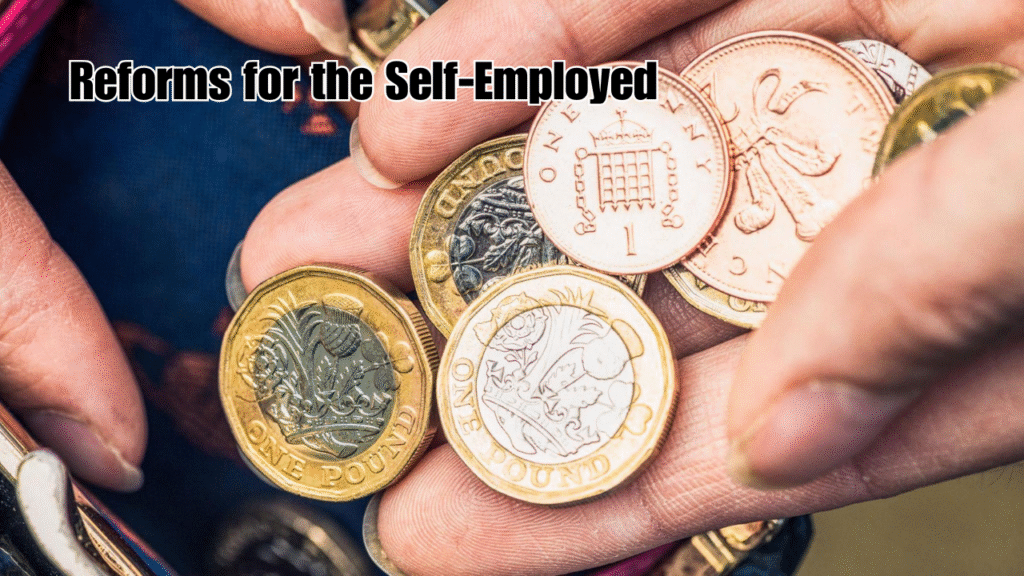Introduction
Millions of UK workers may soon receive a £6,000 boost to their pension pots thanks to new government-backed pension reform proposals. As retirement planning becomes increasingly critical amid rising inflation and a shifting economic landscape, this new pension initiative aims to tackle retirement shortfalls, increase long-term savings, and support low-to-middle income earners more effectively.
The proposal is built around automatic enrolment reforms, increased employer and government contributions, and long-term incentives designed to strengthen the UK’s defined contribution pension framework. In this article, we’ll explore how the £6,000 figure is calculated, who stands to benefit, and what the changes mean for the average worker.
Chapter 1: Overview of the Proposed £6,000 Pension Boost
1.1 What Is the £6k Boost?
The £6,000 pension boost refers to the estimated increase in a worker’s pension pot over time if new policy changes — such as auto-enrolment expansion, employer contribution hikes, and tax relief reforms — are adopted and implemented.
This increase could be the result of:
- Earlier enrolment into pension schemes
- Higher minimum contributions
- Top-ups from the government
- Improved investment returns and lower fees
1.2 Why the Proposal Matters
This proposed reform could transform retirement security for millions, especially:
- Young workers
- Part-time employees
- Low earners
- Women, who are disproportionately impacted by part-time employment and career breaks
Chapter 2: What’s Driving the Need for Reform?
2.1 The Pension Gap
The UK is facing a pension adequacy crisis. According to previous estimates from the Pensions Policy Institute, the average person may retire with 40–60% of what they actually need to maintain their lifestyle in retirement.
2.2 Key Challenges
- Rising cost of living eroding pension values
- Millions still opt-out or are ineligible for automatic enrolment
- Self-employed and gig workers excluded from schemes
- Insufficient government and employer contributions

Chapter 3: Proposed Policy Changes Explained
3.1 Lowering the Age of Auto-Enrolment
Current rules auto-enrol workers aged 22 and over earning at least £10,000 per year. The new plan proposes:
- Lowering age threshold to 18
- Removing the £10,000 earnings threshold
This alone could add thousands of extra pounds to pension pots, especially for those who start working earlier.
3.2 Increasing Minimum Contributions
Current required minimum pension contributions are:
- Employee: 5%
- Employer: 3%
- Total: 8%
Proposed changes may raise this to:
- Employee: 6–8%
- Employer: 4–6%
- Total: Up to 12–14%
3.3 Introducing Pension Top-Ups
The government is also exploring targeted top-ups, similar to the Lifetime ISA concept, where:
- Low-income workers get bonus contributions
- The state may provide £1 for every £4 saved, up to a limit
This could directly boost pots by £1,000+ per year for certain workers.
Chapter 4: Who Stands to Benefit?
| Worker Type | Impact |
|---|---|
| Full-time Employees (18–22 yrs) | Extra 4–6 years of pension savings |
| Part-time Workers | Inclusion in auto-enrolment for the first time |
| Low Earners | State top-ups and boosted employer match |
| Self-employed (future inclusion) | Possible rollout via digital platforms |
Chapter 5: Calculating the £6,000 Boost
5.1 Hypothetical Scenario
Let’s say a worker aged 18 starts saving under the new rules and:
- Earns £20,000/year
- Contributes 6% = £1,200/year
- Employer contributes 5% = £1,000/year
- Government top-up = £500/year
Annual contribution = £2,700
Over 10 years:
- £2,700 × 10 = £27,000
- With compound returns (
5%), value = **£33,000** - Compared to current rules, where savings might start at 22, the £6,000 difference becomes evident
Chapter 6: The Impact on Retirement Outcomes
With earlier contributions and better terms:
- Young workers could retire with £50,000–£80,000 more
- Low earners get state boosts that double their pot growth
- Women and minorities — typically on variable hours — gain access and parity

Chapter 7: Reforms for the Self-Employed
One of the most talked-about aspects is the potential inclusion of self-employed individuals in auto-enrolment-type schemes via:
- HMRC integration during tax returns
- Use of digital wallets and fintech tools
- Optional schemes with state incentives
This is crucial as over 4 million self-employed Brits currently have no formal retirement plan.
Chapter 8: Government’s Long-Term Pension Vision
The proposed reforms are part of the broader “Stronger Nudge to Pensions” strategy and 2030 Pension Savings Roadmap, which aim to:
- Increase pension coverage to 90% of the working population
- Enhance engagement through pensions dashboards
- Improve pension consolidation and transparency
Chapter 9: Industry and Public Reaction
9.1 Financial Industry Viewpoint
Pension providers have welcomed the reforms, stating that:
- They could unlock £100 billion in new long-term investments
- Young savers could build intergenerational wealth
- Admin costs per person would decrease with scale
9.2 Workers’ Perspective
Many young and low-income workers are cautiously optimistic, provided:
- Their take-home pay isn’t reduced too heavily
- Contributions remain flexible during hardship
Chapter 10: Challenges Ahead
Despite the optimism, challenges persist:
| Challenge | Description |
|---|---|
| Political Approval | Legislation needs to pass through Parliament |
| Budget Allocation | State top-ups require sustainable funding |
| Employer Resistance | Some may push back on higher contributions |
| Communication & Engagement | Workers must understand the long-term value |
Conclusion
The proposed pension reforms could represent a turning point for financial security in the UK, especially for groups traditionally underserved by the current system. The £6,000 boost figure isn’t just theoretical — it highlights the power of starting early, saving consistently, and having supportive policies in place.
Whether you’re an 18-year-old just starting work, a part-time retail worker, or someone who paused their career for caregiving, these changes aim to ensure you won’t be left behind in retirement.
This move reflects a shift from short-term survival to long-term stability — a vital step in rebuilding confidence in the UK’s pension infrastructure.
FAQs
1. How will I know if I get the £6,000 boost?
You won’t receive a one-time £6,000 payment. Instead, this figure reflects long-term gains over your career due to earlier contributions, employer match increases, and possible government top-ups under the proposed reforms.
2. When will these pension reforms start?
If approved, reforms could begin rolling out from April 2025 and be fully implemented over the following 3–5 years.
3. Will I be forced to contribute more?
Employers and employees may see gradual contribution increases, but these would be phased to avoid sudden financial pressure. Opt-out options may remain.
4. What if I’m self-employed?
The reforms aim to eventually include self-employed workers, possibly through a digital system connected to tax returns. Details are still under discussion.
5. Are there any risks involved?
All pensions are subject to market risk, but the aim is to provide stable and long-term growth. The reforms also aim to reduce admin costs and increase returns through scale and transparency.








